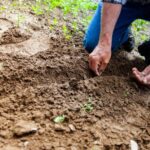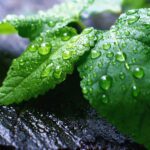Organic agriculture is defined by the FAO as a production system that tries to maximize the use of land resources, emphasizing soil fertility and biological activity and, at the same time, minimizing the use of non-renewable resources and do not use synthetic fertilizers and pesticides to protect the environment and human health.

In detail, this means that organic production depends on certain requirements, ranging from the selection of seed and plant material and continues with aspects such as the method in which the plant is improved, the maintenance of the fertility of the soil used (for crop rotation is mandatory) and the recycling of organic material, and includes that only products suitable for organic agriculture should be used, for which the use of almost all synthetic inputs is prohibited (FAO, 1999).
Modern organic agriculture
Organic agriculture itself has always existed, but its importance regained strength with the name of modern organic agriculture in Europe in 1920. It was not until 1972 that the International Federation of the Organic Agriculture Movement, known by its acronym in English, was established in France. such as IFOAM, which has the objective of showing evidence of the disastrous effects of chemical agriculture and informing about the benefits of organic agriculture. After 1980 is when organic agriculture gains presence and acceptance worldwide (Ochoa R., 2010). In Europe, organic agriculture was regulated for the first time at the community level until 1991 with Regulation (EEC) No. 2092/91, which was replaced in 2009 by Regulation CE 834/2007 (Bioagricert, 2019).

Principles of organic agricultur
The IFOAM has established four principles of organic agriculture, which clearly mark the trends of this type of agriculture, these are:
Health principle
It refers to the fact that organic agriculture must sustain and promote from the health of the soil, to that of people, this includes the same plants and animals.
Ecology principle
This principle refers to sustainable agriculture, which is based on the same living ecological systems and cycles, where it seeks to maintain genetic and agricultural diversity, strengthen the soil and prevent water contamination, which is why both organisms Genetically modified and synthetic inputs are mostly prohibited and crop rotation is mandatory.
Equity principle
This principle is based on respect, it talks about using natural and environmental resources in a fair way, both socially and ecologically, taking into account future generations.
Precautionary Principle
Finally, the precautionary principle uses experience and science to meet efficiency and productivity parameters without compromising the health and well-being of present and future generations, without forgetting the environment.

Organic certifications
Organic agriculture has had to rely on certifications to ensure that the products follow the principles and standards mentioned above, there are multiple certifiers, from international to specific to an area or country. IFOAM is an international certifier, in Europe, in addition to the certification that goes hand in hand with Regulation CE 834/07, there are specific certifiers, such as AB in France or BIOSUISSE in Switzerland. For the United States there is the NOP / USDA standard, in Canada the COR and in Japan the JAS (Bioagricert, 2019). This information is necessary in case you want to export organic products, these must be certified depending on the export destination.
In Mexico, the body in charge of the control system for organic products is the National Health, Safety and Quality Service (SENASICA), which provides the “ORGÁNICO SAGARPA MEXICO” seal to organic products that comply with the Organic Products Law for be able to be marketed as such (SAGARPA, 2016). Currently, Mexico is considered immersed in the international context as a producer and exporter of organic foods, it was even the first producer of certified organic coffee (Goméz L. & Goméz M., 2004).
 AgronoBlog – Agriculture Blog
AgronoBlog – Agriculture Blog 

